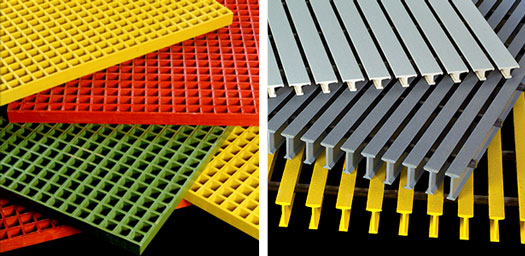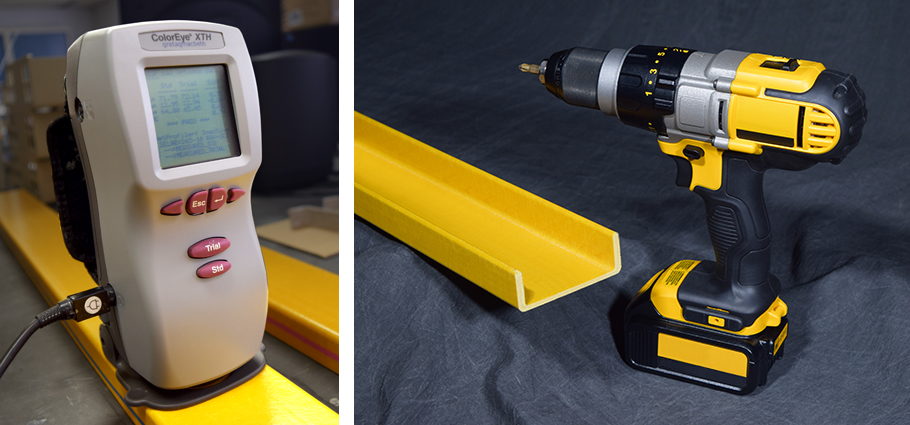Five Tips for Fiberglass FRP Grating Selection
Strongwell produces more than 100 different FRP grating series to meet a variety of customer needs. Applicable to both DURAGRID® pultruded and DURAGRATE® molded grating, the following advice will help select the most appropriate grating series for an application.

1. Determine Design Criteria
Find FRP grating design criteria in the project specifications under Section 06 74 13 “Fiberglass Reinforced Gratings”. If unavailable, refer to ASCE 7-16, Table 4.3-1 for minimum live loads. Allowable deflection for FRP grating is usually limited to ¼" (6 mm) for pedestrian comfort. Larger deflections may be permissible for heavy, temporary loads. Deflection greater than ½" (12 mm) is not advisable due to prying action on hold down clips and potential loosening of fasteners. Long panels utilizing multispan conditions reduce panel deflection.Compare design loads to the grating Safe Load and you will find high Factors of Safety. Serviceability (not strength) generally controls FRP design.
2. Identify Constraints
Bearing bar height and/or spacing may determine grating series selection. Issues such as existing supports, ADA compliance, high heels, dropped objects, drainage, sunlight penetration, ventilation, and even vehicular traffic could be a requirement for a particular installation. With all these situations to consider, DURAGRID® I6000-1", I6000-1.5" and T5000-2" remain the most
common pultruded series selected. DURAGRATE® 1.5" thick x 1.5" square mesh is the most common molded grating series.
3. Select Resin
Generally, polyester is suitable for most conditions;vinyl ester for harsh chemical exposure and additional corrosion protection; phenolic where fire / smoke /toxicity are of primary concern.
Most Strongwell load tables are based upon polyester resin (PE) since vinyl ester (VE) resin has only slightly greater mechanical properties. Phenolic grating does have unique properties and separate load tables. As a visual indicator for grating resin, Strongwell cross rods are a light gray color for PE and black for VE. Refer to the Strongwell Corrosion Resistance Guide for specific chemical environments and select the appropriate resin.
4. Maximize Span
With your initial grating selection chosen, review load tables to determine the maximum span to meet load(s) and allowable deflection. Compare this to plan dimensions and determine support configuration. Selecting a taller bar allows longer grating spans and reduces the frequency of beams. This increases the load on each support beam, but fewer slightly larger beams is often more economical than additional smaller beams. If the beam spacing is considerably more/less than the maximum span, review load tables to see if other grating meets the design criteria.
5. Choose Appearance
A variety of bearing bar colors, surface grit and topcoat treatments are available for FRP grating. Yellow and light gray are standard bar colors. Fine grit is suitable for bare feet; standard medium grit for industrial uses; or coarse grit, if lubricants or debris collection are expected. A urethane top coat adds greater UV protection or custom colors.
Interested in learning more? Read our in-depth article comparing the use cases and performance properties of molded vs. pultruded fibgerglass grating.

Color matching capabilities for resins, finished pultrusions and topcoats.
Conclusion
With many geometric, material, assembly, and finishing options, FRP grating is able to meet the needs of nearly any application. Contact a member of the Strongwell team today with any questions about our FRP solutions.